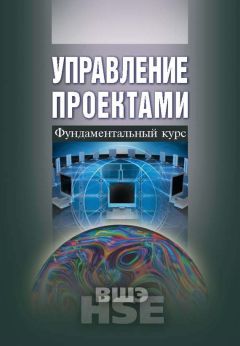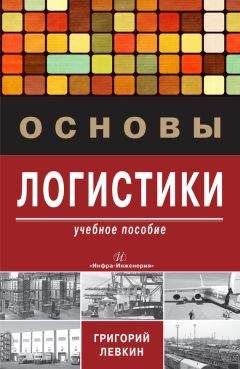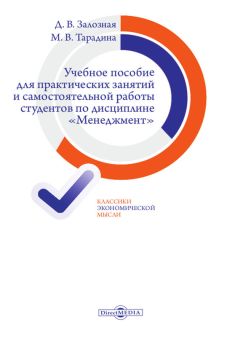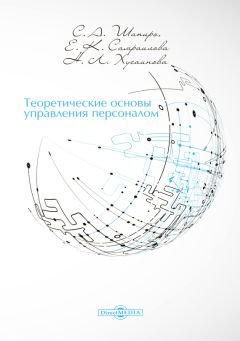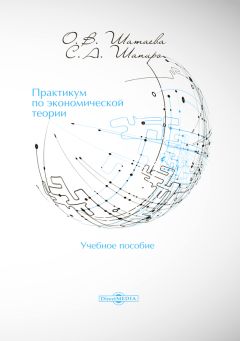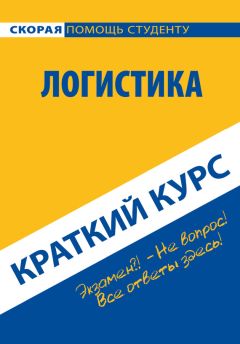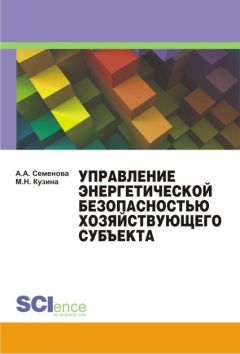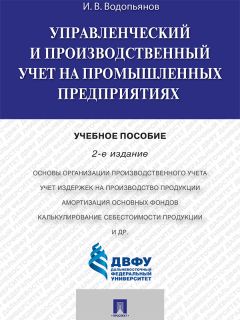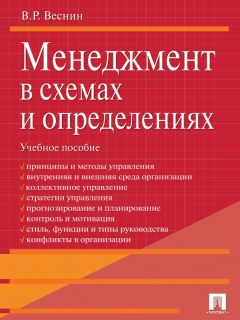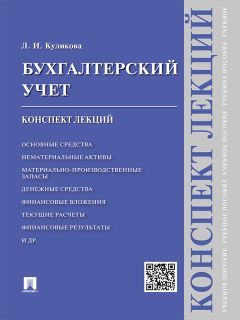Э. Фахрутдинова - Logistics and Supply Chain Management (Логистика и управление цепями поставок)

Все авторские права соблюдены. Напишите нам, если Вы не согласны.
Описание книги "Logistics and Supply Chain Management (Логистика и управление цепями поставок)"
Описание и краткое содержание "Logistics and Supply Chain Management (Логистика и управление цепями поставок)" читать бесплатно онлайн.
Цель пособия – развить навыки использования профессионально-ориентированного английского языка в сфере логистики, научить студентов высказываться, используя лексические и грамматические шаблоны. Пособие содержит теоретическую часть, практические задания, а также дополнительные тексты и задания для самостоятельной работы студентов.
Муртазина Э. И., Фахрутдинова Э. З.
Logistics and Supply Chain Management (Логистика и управление цепями поставок)
ВВЕДЕНИЕ
Основная цель пособия – помощь обучающимся в овладении на базе специальных текстов лексическим и грамматическим материалом (лексическими и грамматическими шаблонами), связанным со спецификой и основными областями логистики, такими как логистика снабжения, производственная, транспортная, складская, распределительная логистика; с международными терминами логистики, международными правилами по толкованию наиболее широко используемых торговых терминов в области внешней торговли – Инкотермс; в ознакомлении с коммерческими, транспортными, финансовыми и таможенными документами.
Учебное пособие состоит из двух разделов: базового курса, который содержит практическую (предтекстовые и послетекстовые лексико-грамматические задания, упражнения на перевод с русского на английский, с английского на русский, коммуникативные упражнения) и теоретическую части (грамматический справочник), и сборника дополнительных текстов и заданий для самостоятельной работы студентов.
Базовый курс состоит из 12 уроков (Units), каждый из которых включает в себя оригинальные англоязычные тексты из газет, журналов и докладов, предтекстовые и послетекстовые упражнения.
Учебное пособие предназначено для занятий с бакалаврами 1-2 курсов по направлению 080200.62 «Менеджмент», профиль подготовки «Логистика», по дисциплине «Иностранный язык», а также может быть использовано в группах бакалавров, магистров, аспирантов, а также при работе со студентами в группах с углубленным изучением английского языка.
БАЗОВЫЙ КУРС
UNIT 1
INTRODUCTION TO LOGISTICS
1. Read the following international words. Define their meanings comparing them to the meanings of the corresponding Russian words:
concept, control, courier, deterioration, distribution, effective, formal, financial, geographical, information, integration, logistics, machine, material, organization, personnel, plan, positioning, practical, process, product, resource, service, strategy, system, transportation, uniform.
2. Complete the following table using suitable forms:
3. Translate English words and phrases in column A using Russian words and phrases from column B:
4. Observe the words and phrases from the text “Logistics”:
5. Read and translate the text:
LogisticsLogistics is the management of the flow of goods, information and other resources between the point of origin and the point of consumption in order to meet the requirements of consumers. Logistics involves the integration of information, transportation, inventory, warehousing, material handling, and packaging, and occasionally security. Logistics is a channel of the supply chain which adds the value of time and place utility.
A professional working in the field of logistics management is called a logistician. Professional logisticians are often certified by professional associations. Some universities and academic institutions train students as logisticians, offering undergraduate and postgraduate programs. The main functions of a qualified logistician include inventory management, purchasing, transportation, warehousing, consultation and the organizing and planning of these activities. Logisticians combine a professional knowledge of each of these functions to coordinate resources in an organization.
The Oxford English Dictionary defines logistics as "the branch of military science having to do with procuring, maintaining and transporting materiel, personnel and facilities." Another dictionary definition is "the time-related positioning of resources." As such, logistics is commonly seen as a branch of engineering that creates "people systems" rather than "machine systems.
Logistics is considered to have originated in the military's need to supply themselves with arms, ammunition and rations as they moved from their base to a forward position. The term logistics comes from the Greek logos (λόγος), meaning "speech, reason, ratio, rationality, language, and phrase". In ancient Greek, Roman and Byzantine empires, military officers with the title Logistikas were responsible for financial and supply distribution matters.
Supply chain management in military logistics often deals with a number of variables1 in predicting cost, deterioration, consumption, and future demand. For instance, peacetime consumption of ammunition and fuel will be considerably less than wartime consumption of these items, whereas other classes of supply such as subsistence and clothing have a relatively consistent consumption rate regardless of war or peace. Troops will always require uniform and food. More troops will require equally more uniforms and food. History has shown that good logistical planning creates a lean and efficient fighting force. Lack thereof can lead to a clunky2, slow, and ill-equipped force with too much or too little supply. In history, some have attributed the defeat of the British in the American War of Independence and the defeat of the Axis in the African theatre of World War II to logistical failure.
Logistics as a business concept evolved in the 1950s due to the increasing complexity of supplying businesses with materials and shipping out products in an increasingly globalized supply chain, leading to a call for experts called supply chain logisticians. Business logistics can be defined as "having the right item in the right quantity at the right time at the right place for the right price in the right condition to the right customer", and is the science of process and incorporates all industry sectors.
The term production logistics is used to describe logistic processes within an industry. The purpose of production logistics is to ensure that each machine and workstation is being fed with the right product in the right quantity and quality at the right time. The concern is not the transportation itself, but to streamline and control the flow through valueadding processes and eliminate non–value-adding ones. Today the complexity of production logistics can be modeled, analyzed, visualized and optimized by plant simulation software.
6. Give English equivalents for the words and phrases given below:
будущий спрос; вывоз продуктов; добавленная стоимость; закупки; концепция бизнеса; логист; передовая позиция; плохо вооруженный; потребление; программное обеспечение моделирования на предприятии; производственная логистика; товарный поток; транспортировка; управление материальными запасами; упаковывание; цепочка поставок.
7. Complete the sentences using words and expressions given below:
material handling; non–value-adding; quality; consultation; shipping out; inventory; quantity; ill-equipped; logistician; supply; consumption; distribution; streamline; cost; purchasing.
1. Logistics involves the integration of information, transportation.........1, warehousing, ...........2 and packaging.
2. In Greek, Roman and Byzantine empires, Logistikas were responsible for financial and supply.........3.
3. Supply chain management in military logistics means predicting ......4, deterioration, .........5, and future demand.
4. The lack of effective logistical planning can lead to a slow, and .........6 force with too little supply.
5. Logistics as a business concept developed due to the complexities of supplying businesses with materials and ............7 products in the globalized .........8 chain.
6. In production logistics feeding each machine and workstation with the right product in the right.........9 and ..........10 at the right time is of great importance.
7. It is necessary to .........11 and control the flow through value-adding processes and eliminate ...............12 ones.
8. A person working in the logistics field is a ............13
9. The main functions of a qualified logistician are inventory management.........14, transportation, warehousing, ............15 and the organizing and planning of these activities.
8. Answer the questions:
1. What is the definition of the word “logistics”?
2. How are the practitioners working in the field of logistics called?
3. What different meanings does the word “logistics” have in the Greek language?
4. What were the military officers in ancient Greek, Roman and Byzantine Empires responsible for?
5. How does the Oxford English Dictionary define “logistics”?
6. Why is it important to manage and to move resources to the places where they are needed in military logistics?
7. What historic events are considered to be the result of the logistical failure?
8. What was the reason of appearing the business logistics?
9. What is the purpose of production logistics?
9. Translate the sentences using the text “Logistics”:
1. Задачи, решаемые логистикой – это сбор информации, транспортировка груза, управление запасами, хранение товар, упаковка товаров, таможенные услуги и многое другое.
2. Логистика – это процесс управления и контроля материальными, информационными и финансовыми потоками, хранения товаров и услуг от пункта производства до пункта потребления.
3. «Логистика» происходит от греческого слова logistice, что означает «искусство вычислять».
4. Логистика – это наука о планировании и контроле, о транспортировании и складировании, о внутризаводской переработке сырья и материалов, о доставке готовой продукции до потребителя, об анализе и переработке информации.
5. В Оксфордском словаре английского языка логистика определяется как «военная наука, связанная со снабжением, поддержкой, транспортировкой материалов и людей».
6. В Византийской империи при дворе императора были «логистики», в обязанности которых входили вопросы финансов, поставки и распределения продуктов питания.
7. В военное время снабжение линий своей армии одновременно с подрывом линий противника является важным элементом тактики военной стратегии.
8. Потребление боеприпасов и топлива в мирное время значительно меньше их потребления в военное время.
9. Эффективное логистическое планирование способствует эффективности боевой силы армии.
10. Управление цепями поставок в военной логистике подразумевает расчет затрат, потребления и будущего спроса.
11. Цель логистики можно считать достигнутой, если определенный продукт необходимого качества доставлен нужному потребителю по удовлетворяющей его цене, в необходимом количестве, в нужное время и в нужное место.
12. Профессионал, работающий в сфере логистики, называется логистом.
13. Главная задача производственной логистики – это обеспечение производства продукции необходимого качества и количества в установленные сроки.
10. Complete the sentences in present simple or present continuous using given verbs in brackets (See Language Notes):
1. When large population displacements .....1 (take) place, whether spontaneous or organized, humanitarian assistance......2 (become) crucial – and urgent.
2. The purpose of the procurement process is to make sure that the organizations involved in relief management ......3 (have) the resources needed to meet identified needs.
3. Right now the trucks .......4 (deliver) aid to the people affected by a disaster.
4. If the disaster .......5 (destroy) most homes in a given area, large local “migrations” may take place within the same urban environment, as victims ......6 (look) for shelter in the homes of relatives and friends.
5. Transport is the means whereby supplies .....7 (reach) the places where they are needed.
6. They .....8 (deliver) the emergency supplies to ultimate recipients now.
7. In the case of mass displacements of people, the victims usually ......9 (not carry) much provision.
8. At the moment we.....10 (observe) the most effective use of available resources.
9. Procurement, storage, mobilization, distribution ......11 (require) an organizational structure.
Подписывайтесь на наши страницы в социальных сетях.
Будьте в курсе последних книжных новинок, комментируйте, обсуждайте. Мы ждём Вас!
Похожие книги на "Logistics and Supply Chain Management (Логистика и управление цепями поставок)"
Книги похожие на "Logistics and Supply Chain Management (Логистика и управление цепями поставок)" читать онлайн или скачать бесплатно полные версии.
Мы рекомендуем Вам зарегистрироваться либо войти на сайт под своим именем.
Отзывы о "Э. Фахрутдинова - Logistics and Supply Chain Management (Логистика и управление цепями поставок)"
Отзывы читателей о книге "Logistics and Supply Chain Management (Логистика и управление цепями поставок)", комментарии и мнения людей о произведении.







